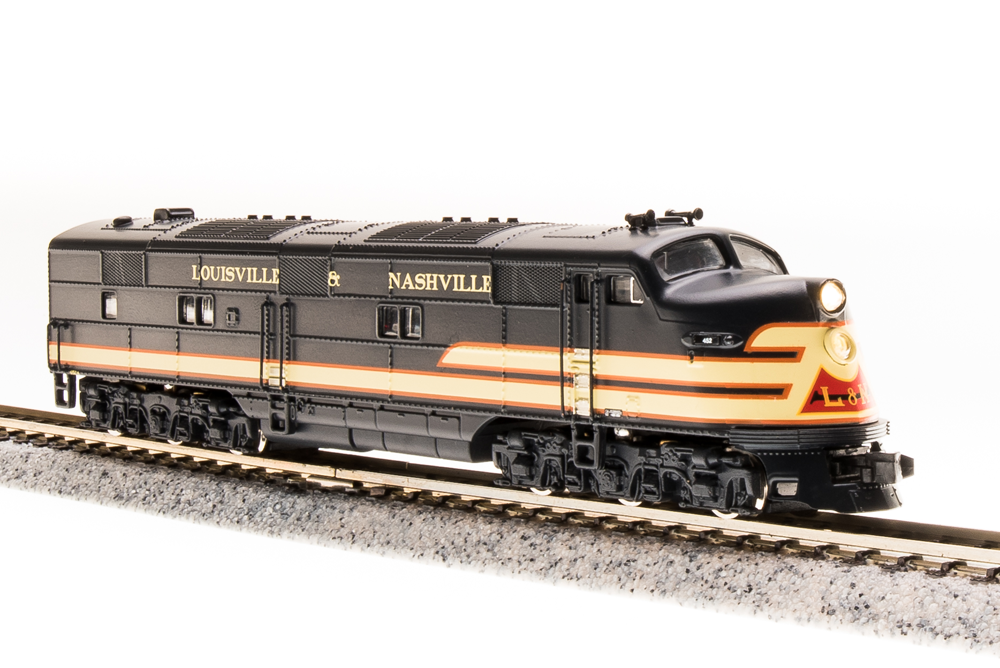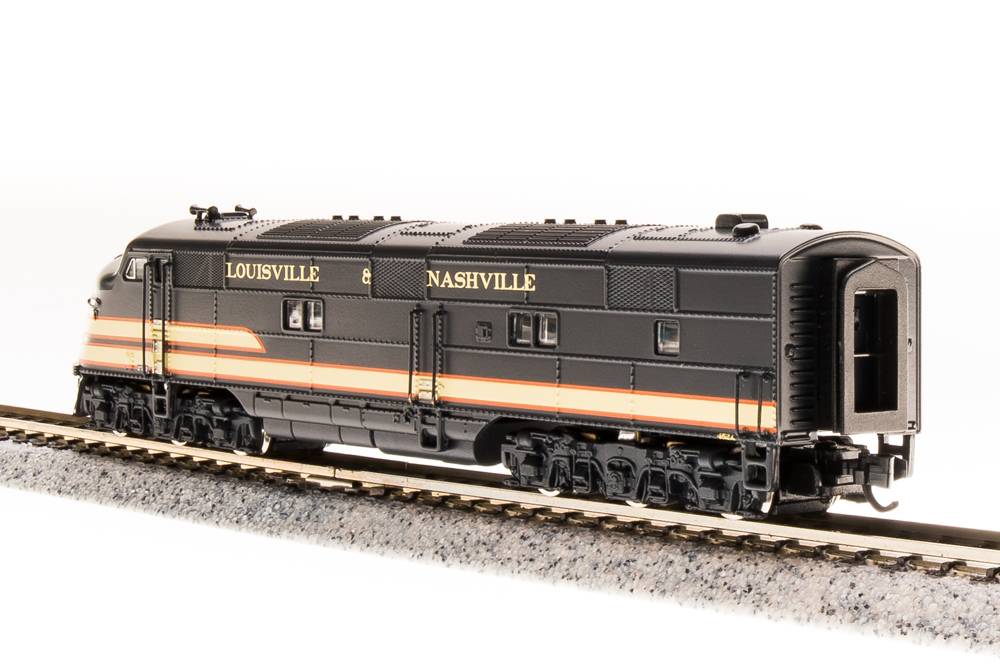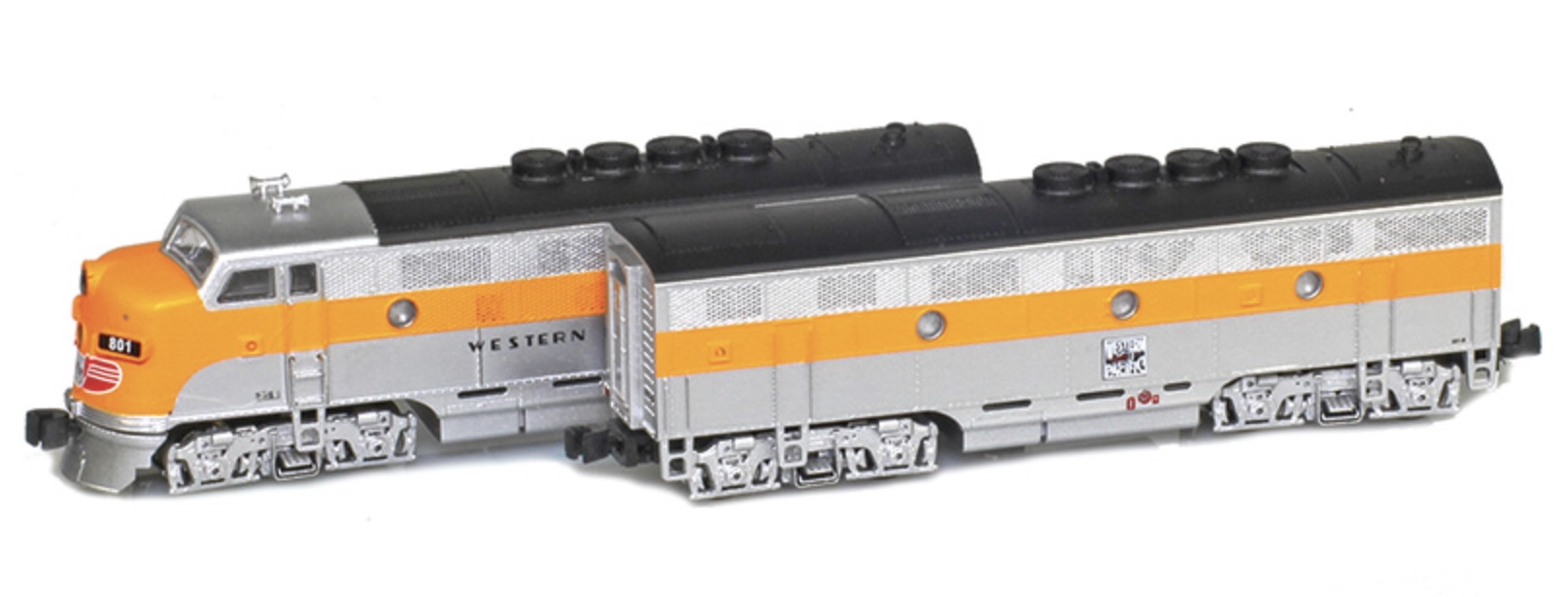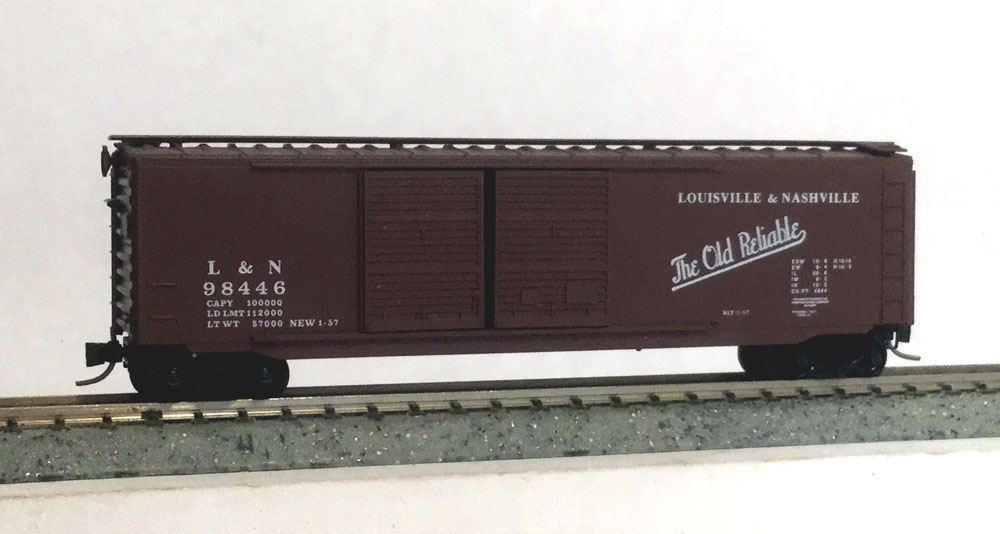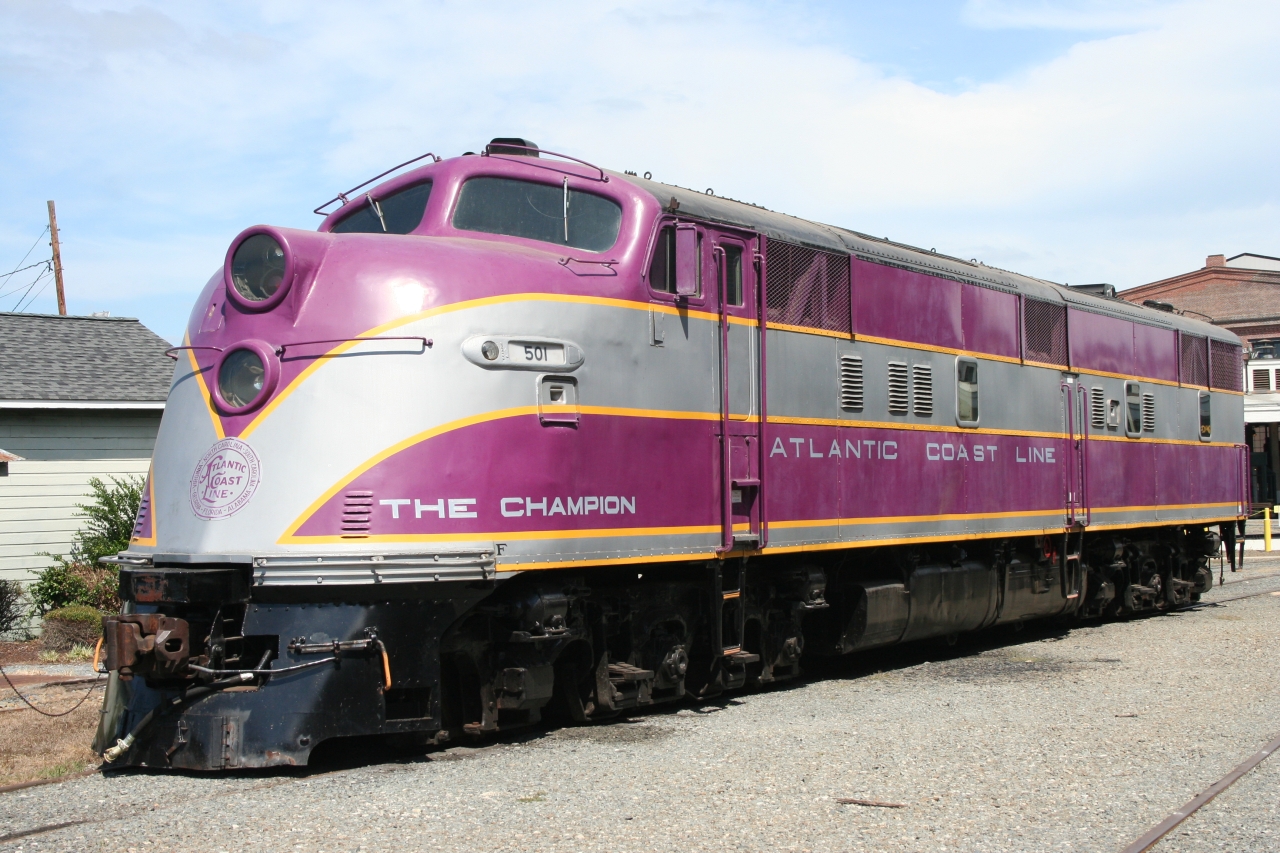Model Information: This model was introduced in 2012 and re-run in 2015 and 2018. When sold in A-B sets, the B-unit is dummy (no motor, no sound).
- Slow-speed operation in DC and DCC
- Prototypical light operation with headlight and cab light
- All-wheel drive and all-wheel electrical pick-up
- Operating knuckle couplers
- Near brass-caliber detail at a plastic price
- ABS plastic body with heavy die cast chassis for maximum tractive effort
- Precision gearing
- 5-pole can motor with skew wound armature and dual fly wheels
- Locomotive Length (coupler to coupler): 5.5 inches
- Locomotive Weight: 4 oz
- Many separately applied details such as handrails, ladders, whistle
- Will Operate on Codes 55, 70, and 80 rail
- Recommended Minimum Radius: 9.75 inches
DCC Information: Factory equipped with BLI Paragon 2 DCC/Sound decoder. Upgraded to Paragon 3 as of 2018 release.
- All new Paragon2 sound and control system
- Integral DC/DCC dual mode decoder for ease of operation
- Authentic EMD E6 sounds! Controllable in DC and DCC.
- Record & Play Operation - Records and plays back sounds and movements once or repeatedly for automatic operation
- 16-bit Sample Rate for exceptional high frequency sound clarity
- Playback Whistle for multiple whistle lengths and patterns
- Choice of 3 selectable Horns
- Alternate Whistle / Horn where applicable for locomotive with air horn and steam whistle - both the main whistle and alternate can be easily played
- Adjustable bell ringing interval for faster or slower bell
- Numerous user-mappable functions with available keys
- Johnson Bar Sound at Direction Change
- Several Ambient Sounds - Controlled with Function Key
- Demo Mode for display and demonstrations
- Grade Crossing Signal - Controlled with Function Key
- Simple Programming with Integral DCC Decoder
- Automatic Forward / Reverse Signal - When activated, stopping triggers and stop whistle toot. When moving forward from a stopped position, toots twice. When moving in reverse. toots three times.
- Chuff sound intensity varies with load
- Individually adjustable sound volumes for each effect
- EZ Reset Button for quick return to factory default settings
Prototype History: The EMD E6 was a 2,000-horsepower (1,500 kW), A1A-A1A, passenger train locomotive manufactured by Electro-Motive Corporation, and its corporate successor, General Motors Electro-Motive Division, of La Grange, Illinois. The cab version, E6A, was manufactured from November 1939 to September 1942; 91 were produced. The booster version, E6B, was manufactured from April 1940 to February 1942; 26 were produced. The 2,000-horsepower (1,500 kW) was achieved by putting two 1,000-horsepower (750 kW), 12-cylinder, model 567 engines in the engine compartment. Each engine drove its own electrical generator to power the traction motors. The E6 was the seventh model in a long line of passenger diesels of similar design known as EMD E-units
From Wikipedia
Read more on American-Rails.com
From Wikipedia
Read more on American-Rails.com
Road Name History: The Louisville and Nashville Railroad (reporting mark LN), commonly called the L&N, was a Class I railroad that operated freight and passenger services in the southeast United States.
Chartered by the Commonwealth of Kentucky in 1850, the road grew into one of the great success stories of American business. Operating under one name continuously for 132 years, it survived civil war and economic depression and several waves of social and technological change. Under Milton H. Smith, president of the company for thirty years, the L&N grew from a road with less than three hundred miles (480 km) of track to a 6,000-mile (9,700 km) system serving thirteen states. As one of the premier Southern railroads, the L&N extended its reach far beyond its namesake cities, stretching to St. Louis, Memphis, Atlanta, and New Orleans. The railroad was economically strong throughout its lifetime, operating both freight and passenger trains in a manner that earned it the nickname, "The Old Reliable."
Growth of the railroad continued until its purchase and the tumultuous rail consolidations of the 1980s which led to continual successors. By the end of 1970, L&N operated 6,063 miles (9,757 km) of road on 10,051 miles (16,176 km) of track, not including the Carrollton Railroad.
In 1971 the Seaboard Coast Line Railroad, successor to the Atlantic Coast Line Railroad, purchased the remainder of the L&N shares it did not already own, and the company became a subsidiary. By 1982 the railroad industry was consolidating quickly, and the Seaboard Coast Line absorbed the Louisville & Nashville Railroad entirely. Then in 1986, the Seaboard System merged with the C&O and B&O and the new combined system was known as the Chessie System. Soon after the combined company became CSX Transportation (CSX), which now owns and operates all of the former Louisville and Nashville lines.
Read more on Wikipedia.
Chartered by the Commonwealth of Kentucky in 1850, the road grew into one of the great success stories of American business. Operating under one name continuously for 132 years, it survived civil war and economic depression and several waves of social and technological change. Under Milton H. Smith, president of the company for thirty years, the L&N grew from a road with less than three hundred miles (480 km) of track to a 6,000-mile (9,700 km) system serving thirteen states. As one of the premier Southern railroads, the L&N extended its reach far beyond its namesake cities, stretching to St. Louis, Memphis, Atlanta, and New Orleans. The railroad was economically strong throughout its lifetime, operating both freight and passenger trains in a manner that earned it the nickname, "The Old Reliable."
Growth of the railroad continued until its purchase and the tumultuous rail consolidations of the 1980s which led to continual successors. By the end of 1970, L&N operated 6,063 miles (9,757 km) of road on 10,051 miles (16,176 km) of track, not including the Carrollton Railroad.
In 1971 the Seaboard Coast Line Railroad, successor to the Atlantic Coast Line Railroad, purchased the remainder of the L&N shares it did not already own, and the company became a subsidiary. By 1982 the railroad industry was consolidating quickly, and the Seaboard Coast Line absorbed the Louisville & Nashville Railroad entirely. Then in 1986, the Seaboard System merged with the C&O and B&O and the new combined system was known as the Chessie System. Soon after the combined company became CSX Transportation (CSX), which now owns and operates all of the former Louisville and Nashville lines.
Read more on Wikipedia.
Brand/Importer Information:  Broadway Limited Imports, LLC defines itself as "the world's foremost producer of top-quality HO and N scale model trains".
Broadway Limited Imports, LLC defines itself as "the world's foremost producer of top-quality HO and N scale model trains".
The company was founded in 2002 and introduced its first N scale model in 2009.
Broadway Limited Imports is composed of a team of 15 fun loving individuals who are dedicated to creating the most realistic model railroading experience possible, with the best customer service possible.
The Broadway Limited Imports headquarters is located in Ormond Beach, Florida at 9 East Tower Circle. It's just under an hour's drive from Disney World.
About Broadway Limited Imports.

The company was founded in 2002 and introduced its first N scale model in 2009.
Broadway Limited Imports is composed of a team of 15 fun loving individuals who are dedicated to creating the most realistic model railroading experience possible, with the best customer service possible.
The Broadway Limited Imports headquarters is located in Ormond Beach, Florida at 9 East Tower Circle. It's just under an hour's drive from Disney World.
About Broadway Limited Imports.
Item created by: Alain LM on 2020-04-29 12:37:28
If you see errors or missing data in this entry, please feel free to log in and edit it. Anyone with a Gmail account can log in instantly.
If you see errors or missing data in this entry, please feel free to log in and edit it. Anyone with a Gmail account can log in instantly.


